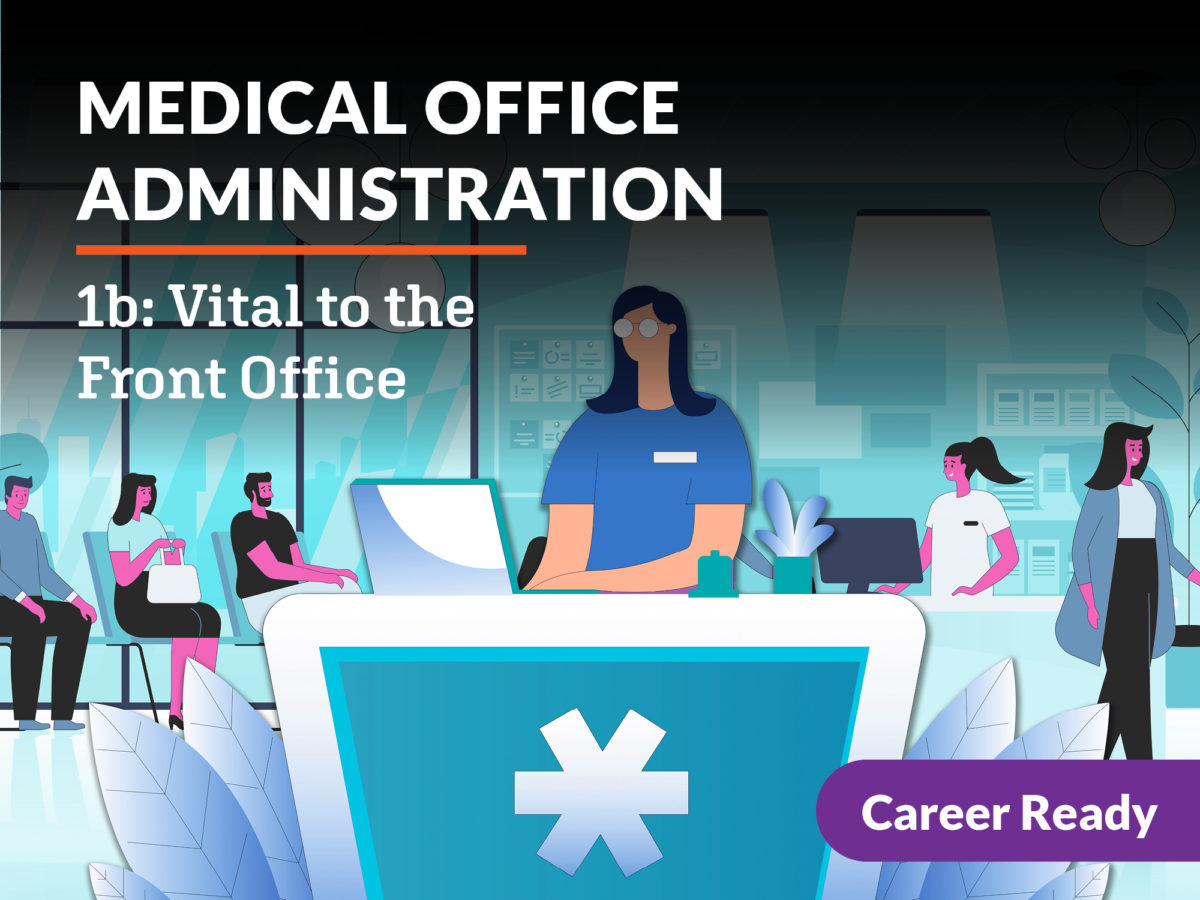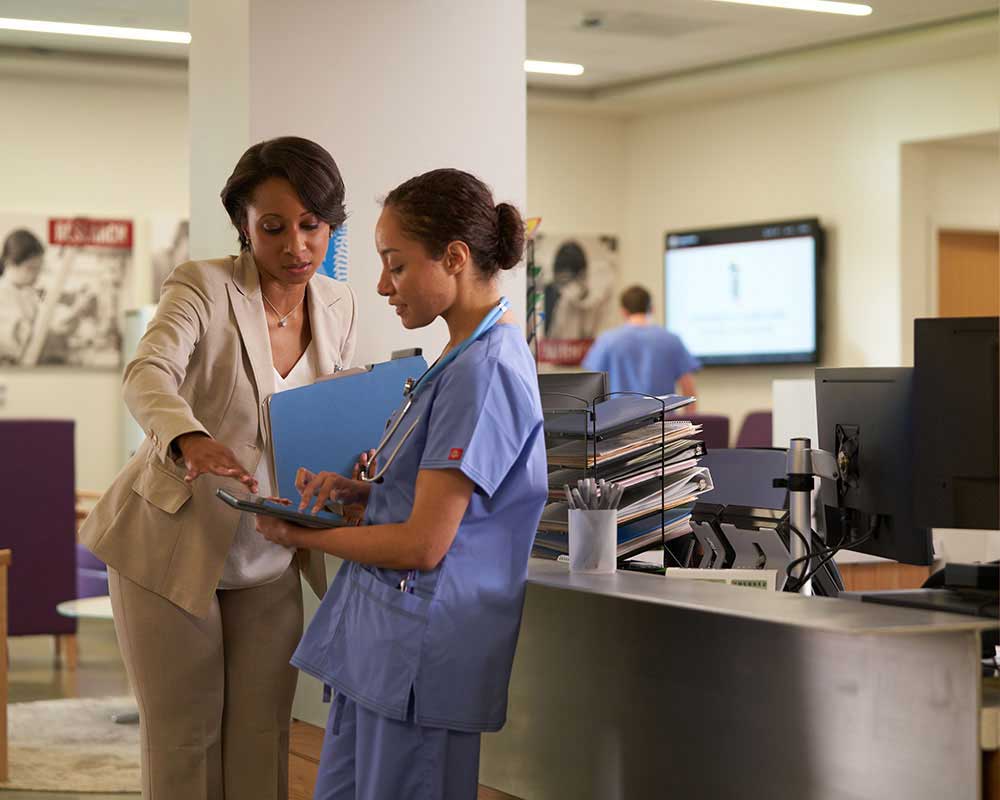The Future of Medical Administration: Fads and Advancements to View
The Future of Medical Administration: Fads and Advancements to View
Blog Article
Ideal Practices in Medical Management for Improving Efficiency and Minimizing Costs
In the ever-evolving landscape of health care, the search of finest methods in medical management is extremely important for enhancing effectiveness and suppressing costs. By incorporating sophisticated innovations such as electronic health records and telemedicine, doctor can improve procedures and enhance person care. Modern technology alone is not a panacea; maximizing resource appropriation and promoting collaborative communication amongst treatment teams are just as critical. As companies strive to stabilize high quality and cost, what approaches should be focused on to accomplish these double goals? The solution to these questions hold the key to a more lasting healthcare system.
Leveraging Advanced Innovation
In today's swiftly advancing medical care landscape, leveraging sophisticated modern technology is no longer optional yet essential for effective medical administration. The assimilation of digital solutions right into healthcare systems has changed the method centers operate, simplifying procedures and improving person treatment. Electronic Wellness Records (EHRs) are pivotal, giving detailed client data that can be accessed immediately by licensed employees, therefore reducing redundancy and lessening errors. By streamlining individual info, EHRs get rid of the demand for troublesome documentation and facilitate seamless interaction among healthcare suppliers.
Telemedicine is another technological innovation that has actually reinvented individual communication. It supplies convenience for both patients and healthcare professionals by allowing remote appointments, which can lower the demand for in-person visits and enhance appointment organizing. Additionally, telehealth systems can expand medical care access to country or underserved areas, bridging spaces in treatment delivery.
Additionally, the use of Expert system (AI) and maker discovering is becoming progressively prevalent in predictive analytics, enabling very early discovery of possible health and wellness issues and even more educated decision-making. These innovations, when incorporated successfully, can improve analysis precision and personalize patient treatment plans, eventually causing boosted healthcare end results and operational performance.
Optimizing Source Allowance
Reliable source appropriation is important for making the most of the performance of clinical management. By purposefully handling resources such as personnel, tools, and funds, health care centers can dramatically enhance their functional performance, improve client outcomes, and minimize unnecessary expenditures. The primary step in optimizing source allowance involves performing a thorough evaluation of existing assets and identifying areas where resources may be underutilized or exhausted. This assessment must be data-driven, making use of metrics and analytics to notify decision-making processes.
Prioritizing resource allowance based on client requirements and solution demands is crucial. Executing flexible staffing versions can additionally enhance labor sources by readjusting workers allotment in response to fluctuating individual volumes.
Economic sources must be diligently monitored and assigned with calculated foresight to support both short-term operational demands and long-lasting institutional objectives. This includes investing in training programs that enhance personnel proficiencies and taking on energy-efficient techniques that reduce functional expenses (medical administration). Inevitably, an enhanced resource allocation method fosters a lasting health care setting that is receptive, effective, and economically sensible
Streamlining Process Processes
When healthcare facilities aim to improve functional effectiveness, streamlining published here operations processes comes to be a critical focus. Reliable operations minimize redundancy, get rid of unnecessary steps, and improve control among medical care specialists. This technique not just increases service delivery yet also boosts the quality of individual treatment.

Next, modern technology combination plays a substantial duty in streamlining workflows. Implementing electronic health documents (EHRs) and digital physician order entry (CPOE) systems minimizes documentation, reduces human mistake, and makes certain info comes to all relevant employees. Furthermore, leveraging telemedicine platforms can improve individual appointments and follow-ups, decreasing the strain on physical facilities.

Inevitably, structured operations news result in cost reductions and improved person complete satisfaction, cultivating a much more sustainable healthcare environment.
Enhancing Information Management
Structure upon streamlined process, optimizing data administration ends up being a crucial part ahead of time medical care administration. Reliable information monitoring systems are vital for keeping accurate person records, boosting decision-making, and ensuring conformity with regulatory criteria. By implementing robust information administration remedies, health care centers can enhance the high quality of person treatment while all at once reducing functional prices.
One trick facet of enhancing information monitoring is the combination of advanced electronic wellness document (EHR) systems. These systems promote the smooth exchange of person details across different divisions, lowering duplication of examinations and lessening errors. A well-designed EHR system supports information analytics, allowing healthcare providers to identify patterns and make notified choices regarding client treatment.
Furthermore, guarding patient information is extremely important. Taking on comprehensive cybersecurity procedures, including file encryption and regular audits, makes certain the stability and discretion of delicate info. This not only shields individuals however also maintains the establishment's reputation.
Investing in personnel training is one more crucial factor. Informing medical care experts on information monitoring techniques improves their ability to properly make use of innovation, leading to improved patient results. Finally, boosting data management through innovative modern technology and detailed training is necessary for accomplishing efficiency and expense decrease in medical administration.
Fostering Collaborative Interaction
An essential part ahead of time clinical administration is cultivating collective communication among healthcare experts. Effective interaction is paramount for making sure smooth client care, maximizing treatment end results, and reducing mistakes. By urging open discussion and control across multidisciplinary teams, healthcare organizations can boost their functional effectiveness and minimize unnecessary costs.
Central to this method is the assimilation of interaction innovations such as digital health and wellness records (EHRs) and protected messaging systems, which help with the fast exchange of crucial person info. These tools enable health care companies to gain access to and share information in genuine time, ensuring that all employee are notified and aligned in their decision-making processes. Normal group meetings and interdisciplinary rounds can even more promote a culture of partnership and responsibility.
Educating programs concentrated on boosting interaction skills are also necessary. These programs can aid personnel establish the ability to convey details plainly and pay attention proactively, thus reducing misunderstandings and fostering an encouraging workplace. In addition, adopting standardized communication protocols, such as SBAR (Scenario, History, Evaluation, Referral), can improve the exchange of details, making certain that important information are shared succinctly and properly. Inevitably, promoting joint communication leads to boosted healthcare delivery and price financial savings (medical administration).

Verdict
Including innovative technology, such as digital wellness documents and telemedicine, read this together with enhanced resource allocation and streamlined process procedures, is essential for boosting efficiency in clinical administration. Efficient information management and cultivating collaborative communication among health care groups are critical for lessening redundancies and improving treatment top quality. By focusing on preventative care and taking part in top quality improvement initiatives, medical care organizations can achieve considerable price savings and enhanced client outcomes, thus ensuring sustainable health care delivery in a progressively intricate environment.
Report this page